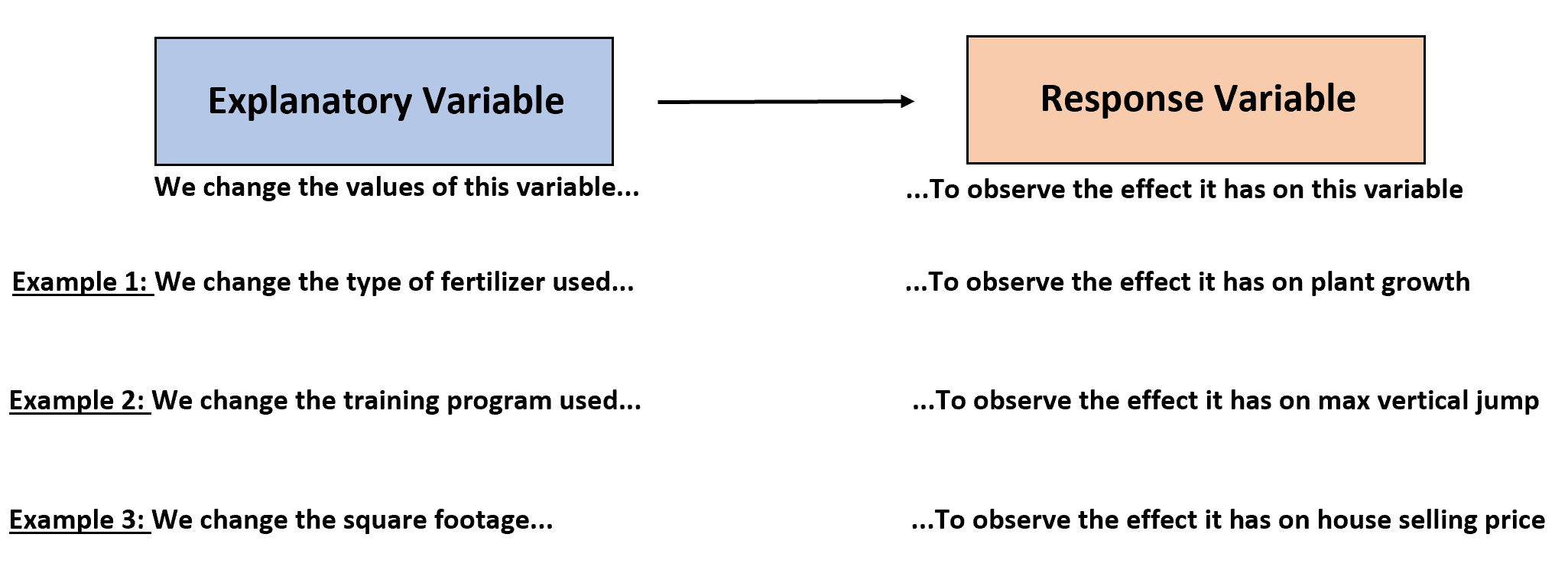Two of the most important types of variables to understand in statistics are explanatory variables and response variables.
Explanatory Variable: Sometimes referred to as an independent variable or a predictor variable, this variable explains the variation in the response variable.
Response Variable: Sometimes referred to as a dependent variable or an outcome variable, the value of this variable responds to changes in the explanatory variable.
In an experimental study, we’re typically interested in how the values of a response variable change as a result of the values of an explanatory variable being changed.

The following examples show different scenarios involving explanatory and response variables.
Example 1: Plant Growth
A botanist wants to compare the effect that two different fertilizers have on plant growth. She randomly selects 20 plants from a field and applies fertilizer A to them for one week. She also randomly selects another 20 plants from the same field and applies fertilizer B to them for one week. After one week she measures the average plant growth for each group.
In this example, we have:
Explanatory Variable: Type of fertilizer. This is the variable we change so that we can observe the effect it has on plant growth.
Response Variable: Plant growth. This is the variable that changes as a result of the fertilizer being applied to it.
Fun Fact: We would use a two sample t-test to perform this experiment.
Example 2: Max Vertical Jump
A basketball coach wants to compare the effect that three different training programs have on player’s max vertical jump. He randomly assigns 10 players to use training program A for one week, another 10 players to use training program B for one week, and another 10 players to use training program C for one week. At the end of the week he measures the max vertical jump of each player to see if there are significant differences between the groups.
In this example, we have:
Explanatory Variable: Type of training program used. This is the variable we change so that we can observe the effect it has on max vertical jump.
Response Variable: Max vertical jump. This is the variable that changes as a result of the training program used by the player.
Fun Fact: We would use a one-way ANOVA to perform this experiment.
Example 3: Real Estate Prices
A real estate agent wants to understand the relationship between square footage of a house and selling price. She collects data about square footage and selling price for 100 houses in her city and analyzes the relationship between the two variables.
In this example, we have:
Explanatory Variable: Square footage. This is the variable that we observe change in so that we can observe the effect it has on selling price.
Response Variable: Selling price. This is the variable that changes as a result of the square footage of the house being changed.
Fun Fact: We would use simple linear regression to perform this experiment.
Summary
In each of the examples above, we changed the values of some explanatory variable and observed the resulting change in values of some response variable.

Additional Resources
What is a Lurking Variable?
What is a Confounding Variable?
Independent vs. Dependent Variables: What’s the Difference?